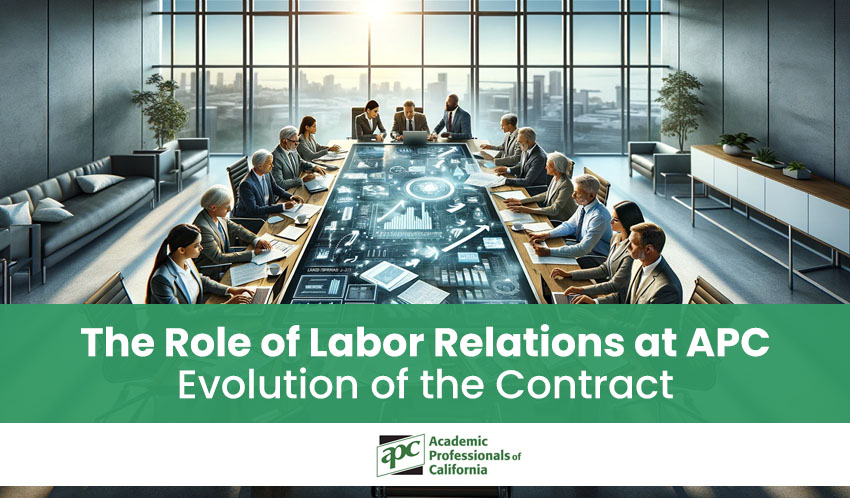This article serves as the second installment in a 4-part series examining the critical function of Labor Relations at APC. After reviewing the foundational history and operations of Labor Relations in our first piece, we now focus on the evolution of the APC contract, alongside the strategic employment of contract reopeners and Memoranda of Understanding (MOUs), showcasing APC’s adaptability and unwavering commitment to its members’ rights.
Evolution of the Contract
The APC contract has remained relatively consistent with 34 articles since at least 2000. Instead of starting anew with each negotiation cycle, incremental changes are made to existing articles, with new subpoints added over time.
Notable changes, such as the inclusion of FML and the California Parental Pregnancy Leave Act, are incorporated within the existing structure of the contract. The salary article is subject to significant changes, often driven by CSU’s budget constraints and negotiations around pay raises.
Duration of the contract is closely tied to salary negotiations. Due to the nature and uncertainty of State funding the CSU, in most instances, will insist on contingency language in order to enter into a multiyear contract.
Transitioning from the broader view of contract evolution, we move to a closer examination of the recent Tentative Agreement and the strategic role of contract reopeners and MOUs. These elements showcase the nuanced and proactive approach Labor Relations takes in safeguarding member interests under evolving circumstances.
Handling the Recent Tentative Agreement
During discussions surrounding the recent Tentative Agreement (TA), the Bargaining Team deliberated on the best course of action. The Bargaining Team voted to accept the TA since there was a consensus it was time for the members to be heard. Ultimately the members rejected the TA. Norris said, “LR’s role during those deliberations was not to cast a vote, but to ensure the Bargaining Team had an understanding of the potential procedural effects of the members rejecting the TA.”
Norris continued, “Once the Team voted it became the job of Labor Relations to provide information to bargaining unit members about the TA’s content.” As the ratification process moved along it became the LR Team’s role to provide guidance, based on years of training and experience, on the possible courses the Union might pursue depending on the outcome.
Following the rejection, the LR Team was focused on helping the Bargaining Team decide on a course of action once the members spoke. After discussing the matter, the Bargaining Team decided on a plan, the LR Team prepared the relevant proposals, and the Parties met.
The Bargaining Team’s decisions, supported by the LR Team’s advice, led to the TA presented in February of 2024 which received overwhelming member approval, marking a positive turn of events.
Contract Reopeners and MOUs
Sometimes during multiyear contracts, the Parties may allow for “reopeners” on certain issues. This allows for adjustments to specific contract articles. For instance, in lieu of contingency language the Parties may agree to reopen the salary article to discuss salary increases. The Parties may also agree to include additional articles to be opened in conjunction with the salary article.
Memoranda of Understanding (MOUs) are utilized to address specific issues or ambiguities that arise after negotiations have concluded. They also serve to resolve grievances or settle matters where there’s a need for clarification. MOUs can address issues such as classification standards or policy adjustments that fall within the scope of representation.
These agreements may be necessary when a significant change to contract language is impractical. For instance, MOUs were utilized to address issues like trainee classifications and vaccination policies, tailoring solutions to APC’s specific needs while accommodating differences with other CSU bargaining units.
While MOUs are not part of the main contract, they serve to clarify and adjust terms and conditions of employment in a more flexible manner than formal contract amendments.
The continuous adaptation and thoughtful strategies in the evolution of the APC contract, handling of the Tentative Agreement, and use of contract reopeners and MOUs underscore the dynamic nature of Labor Relations at APC. These measures ensure the organization not only responds to immediate needs but also proactively prepares for future developments, safeguarding the interests of its members. Looking ahead to Part 3, we will further explore the intricacies of negotiation strategies, shedding light on the challenges and tactics pivotal to forging meaningful agreements.

